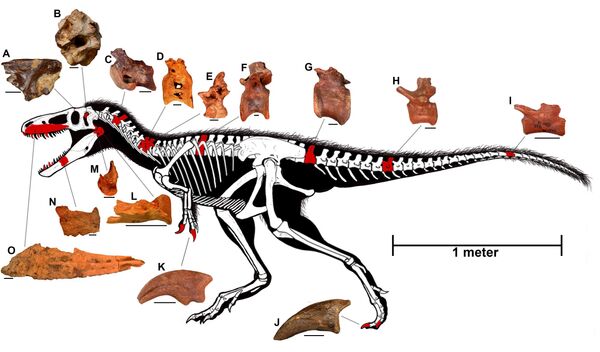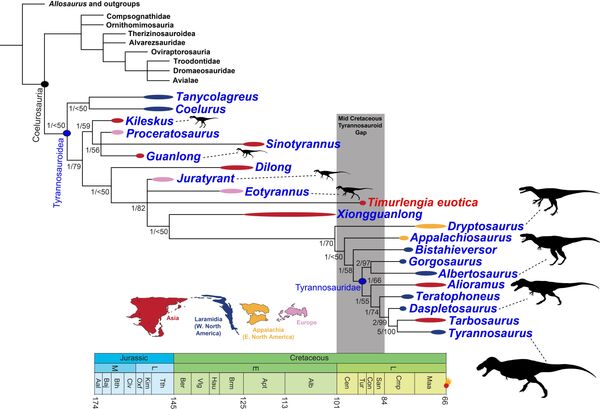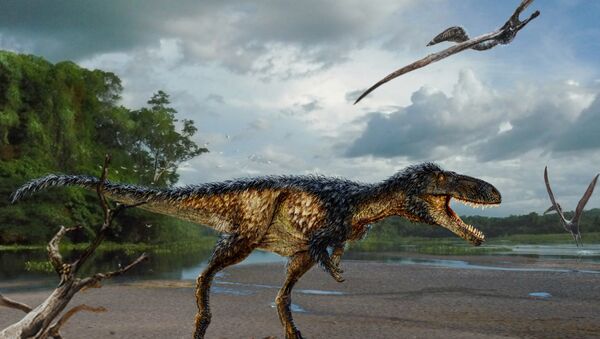How the T-rex rose to dominance has previously been a "murky" time in dinosaur history. Ancestors of the earliest known tyrannosaurs had human sized brains — despite their towering proportions.
But scientists from the University of Edinburgh along with their colleagues in the US and Russia, have found that the fossilized remains of a skull belonging to a 90 million year old tyrannosaur indicates that:
"Tyrannosaurs got smart before they got big," Stephen Brusatte, a paleontologist at Edinburgh University told Sputnik.
The newly discovered species, named Timurlengia euotica, developed their brain senses before reaching gigantic proportions which could be why the species successfully hunted prey and came to dominate the Cretaceous world.

The name, Timurlengia euotica comes from Timur Leng, a 14th century Central Asian warlord, whilst eutocia means 'well eared'. The remains of Timurlengia euotica's skull show it had an elongated inner ear — its cochlear.
"It is a mini-me tyrannosaur right on the cusp of becoming huge. It has an advanced brain and senses and tells us tyrannosaurs got smart before they got big!" Brusatte explains.
By the end of the dinosaur age, an adult T-rex could weigh as much as seven tons and measure 13 meters wide.
"Timurlengia is one of the highlights of my career," Brusatte admitted to Sputnik.
Brains Before Braun
Scientists have described the skull as a "keystone specimen" of the ears, eyes and mouth of the tyrannosaur before it became the huge T-rex.

The findings, published in the Proceedings of the National Academy of Sciences, "gives us some insight into how T-rex and its closest cousins became these giant, dominant, utterly successful apex predators.
"The tyrannosaurs evolved these features of the brain when they were still small, and those enhanced abilities may have come in handy when the tyrannosaurs had the opportunity to become dominant," said Stephen Brusatte.
The fossilized remains were discovered in the Kyzylkum desert in northern Uzbekistan.


